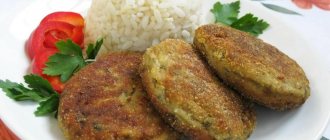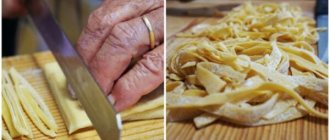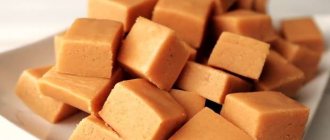In ancient times, the Slavs had a large number of delicious, vitamin-rich, healthy and at the same time very cheap dishes.
One of them is considered to be botvinya, the classic recipe of which belongs to ancient Russian cuisine. As the name suggests, it was prepared from tops - sorrel leaves, beets with the addition of spinach, nettle, dill, quinoa, parsley. In general, all the greens that grew in the garden were used. Botvinya was poured with sour kvass. Later they began to add finely chopped radishes, fresh cucumbers, and beets to it. Such a cold, common soup quickly gained popularity not only among the poor, but also took its place of honor at the festive and everyday meals of princes and kings. Only for noble people, botvinya was flavored with grated horseradish, and later lemon juice was added. It was served with boiled or salted fish, various seafood, and crayfish. A device with crushed ice was placed separately on the table for additional cooling of the dish. If previously separate cutlery was served for fish, ice and the botvinya itself, and they were laid out on different plates, now most often the botvinya is served immediately with ice and fish (seafood) in one container.
Classic botvinya recipe from Andrey Bugaisky
Initially, botvinya was prepared with crayfish and sturgeon and was called complete. The recipe for this cold soup, in which seafood is not added, is called incomplete. In any case, this dish is very tasty and will diversify your diet and surprise your loved ones.
To prepare botvinya for 4 hungry adults you need to buy:
- 3 young beets with tops
- large bunch of sorrel
- large bunch of spinach
- 3 fresh cucumbers
- bunch of radishes
- bunch of green onions
- half a bunch of dill
- 3 chicken eggs
- 500 g of fresh sturgeon or at least pike perch or 300 g of lightly salted salmon or trout
- 4 live crayfish
Preparation:
- The composition of the set is even somewhat redundant, but it won’t be any worse; optional components can be removed from it painlessly.
- We divide whole-dug beets into three components. We clean the beets themselves and cut them into thin julienne strips. Or grate it if you're feeling lazy, but we don't approve of that. Place in a bowl, sprinkle with salt, pour over white wine or apple cider vinegar, press down with pressure and let stand for at least half an hour.
- For the botvinya, pour white wine vinegar over the prepared beets.
- Boil 1 liter of water, add some salt, throw in the washed sorrel (it’s better to tear off the stems), simmer for a minute and drain in a colander, let drain and squeeze.
- When the sorrel has cooled a little, puree it with a blender or through a sieve the old-fashioned way. Do the same with spinach, just don’t puree it, but chop it finely with a knife on a board.
- For the botvinya, finely chop the spinach
- Simmer sturgeon or pike perch in very salty water with vinegar, or better yet, in kurt broth or cucumber brine. It is more convenient to take the fish on the skin; it does not fall apart during the process. The fish comes in very quickly, don’t get carried away with this activity. Let cool and cut into slices about a centimeter thick.
- For botvinya, cut the poached sturgeon into pieces
- Boil 3 liters of water, add 3 tablespoons of salt and dill stems, throw in live crayfish head down, let it boil again and keep on medium heat for about 10 minutes. Let the crayfish cool in the same water for at least another 10 minutes, then remove and clean the necks and claws.
- For the botvinya, peel the boiled crayfish and cut them
- Boil 2 liters of water, add the pickled beets along with the juice, let it boil again, reduce the heat, simmer for 3 minutes and add the beet stems cut diagonally. Let it boil again and cook again for three minutes. Add thinly sliced beet leaves, let it boil again, cook for another three minutes. Add sorrel and spinach, stir. Remove from heat and let cool, the faster the better. It makes sense to place the pan in a bowl of cold water or in a plugged sink. Then transfer to the refrigerator and cool as much as possible.
- Cooking botvinya
- Finely chop cucumbers, radishes, green onions and dill. Hard-boil and peel the eggs, cut them in half or into quarters.
- For the botvinya, finely chop the vegetables and herbs
- Let's begin the general collection of botvinya. Place fresh vegetables and herbs on plates. Pour very cold beet broth and other stuff on top. Lay out crayfish necks and claws, hard-boiled eggs.
- Assembling the boot
- A slice of poached fish can be placed directly on a plate; flattened lightly salted fish is best served separately with lemon wedges.
- The result is a dazzling beauty of rich and bright taste. There is no shame in serving it on any table. In my opinion, only people with a hopelessly spoiled taste and coloristic perception of the world can put sour cream in Botvina. We do not recommend doing this!
Recipe No. 9. Cold sorrel soup
You will need : 200 g sorrel, 300 g potatoes, 3-4 chicken or 10-12 quail eggs, 2 leeks, 100 ml heavy cream, 2 tbsp. olive oil, butter for frying, spices to taste.
Cooking . Boil the eggs, cool, peel, cut (quail in half, chicken in quarters).
Sort out the young sorrel leaves, cut off the hard ends of the cuttings and rinse thoroughly. Then place in boiling water for 1 minute, remove and immediately plunge into ice water. Remove and place in a cleaned blender jar. Pour in well-chilled cream and olive oil and beat until smooth.
Chop the white part of the leek stalks as finely as possible and place in the melted butter in a saucepan for 5 minutes. Cut the peeled and washed potatoes into cubes and place them in a saucepan with butter and onions, adding a liter of water. Bring the soup to a boil and cook for 20 minutes, then cool and puree the whole mass with a blender.
First pour the potato-onion puree soup into a deep plate, add the sorrel-cream soup puree into the center and garnish everything with chopped egg and chopped herbs if desired.
Full simple botvinya with red fish
You will need: 1 liter of dark bread kvass, 1 glass of white (sour) okroshka kvass, 0.5 kg of red fish, 500 g of sorrel, 3 small young beets with tops, 250 g of fresh nettle, 1 fresh cucumber, a bunch of green onions, taste - salt, sugar, mustard or horseradish, crushed ice.
Preparation.
- Wash the green onions, dry, chop and grind with salt and sugar. Wash the nettles thoroughly in cold water, pour boiling water over them, and drain in a colander. Boil the sorrel and beet tops for 3-4 minutes. Chop all this foliage very finely with a sharp knife.
- Lightly simmer the beet roots until soft, cool, cut into slices, and add to the chopped herbs and onions.
- Wash the cucumber and cut into cubes.
- Boil red fish (sturgeon, salmon, stellate sturgeon) in a small amount of boiling salted water with onion, dill, black pepper and bay leaf, cool, and cut into slices of about 50 g each.
- Combine both types of kvass, pour this dressing over a lot of tops, add chopped cucumber and refrigerate for 20-30 minutes.
- Serve each person in three serving bowls - separately botvinya soup, boiled fish and crushed ice.
Recipe No. 8. Armenian fermented milk soup Sarnapur with beet tops
You will need : 750 ml of kefir (matsoni), 1/2 cup of dry green peas, 1/4 cup of white rice, a bunch of beet tops, 1 tbsp. dried cilantro and mint, salt, chili and ground black pepper to taste.
Cooking . Rinse the dried peas thoroughly under running water, add 1 liter of cool water and cook until tender, occasionally removing any foam that appears with a slotted spoon. Add rice here 7-8 minutes before the end of cooking.
Wash fresh young beet tops, separate the stems and finely chop them, and cut the leaves crosswise into strips. Place the chopped tops in 100 ml of boiling water and simmer for 3-5 minutes over low heat. Without draining the liquid, combine the beet tops with the peas and rice. Season everything with salt, mint and cilantro and cook for about 3 minutes.
Remove the soup from the heat and cool, and then season with chilled kefir. Already in the plate, season the sarnapur with hot red and coarse black pepper.
Incomplete Lenten botvinya, classic recipe
In ancient times, if tops were prepared from beet tops and other greens, it was called incomplete. A dish that was supplemented with fish or crayfish was called complete. The liquid component of the dish was also different. Botvinya was simply filled with kvass, and it was considered simple. If, in addition to kvass, the dressing included sourdough made from kvass grounds and flour, then botvinya was called steamed.
The easiest classic recipe is considered incomplete botvinya.
To prepare it you will need:
- half a kilo of sorrel;
- 5-6 fresh cucumbers;
- 2 liters of kvass;
- a bunch of beet tops;
- green onions, parsley, dill - 50 g each;
- sugar, salt, horseradish, mustard - to taste;
- ice cubes.
Preparing cold soup is quite simple.
Cooking algorithm:
- The sorrel and beet tops are sorted out, washed, and placed in a saucepan. Pour in a small amount of water so that it just covers the greens. Boil in its own juice for about 10 minutes, then grind through a sieve or grind with a mixer (blender). Boil the chopped beets and sorrel
- Green onions are washed, dried, chopped and mixed with horseradish or mustard, not forgetting to add salt. Mix green onions with horseradish and mustard
- Peel the cucumbers, finely chop them. Finely chop the cucumbers
- Transfer the sorrel-beet mixture into a dish, add onions with horseradish, and cucumber slices. Everything is filled with kvass. Decorate with chopped herbs and serve with a bowl of ice.
- This is the simplest, most economical, dietary version of botvinya.
Botvinya with shrimps and canned mussels
You will need: 1 liter of kvass, 500 g of young beets with tops, 200 g of canned mussels, 200 g of boiled shrimp, 1 cucumber, 2 eggs, a small bunch of green onions, salt, sugar, sour cream to taste.
Preparation.
- Peel the beets, wash them, cover with cold water and cook for about 20 minutes, add the tops with leaves and cook for another 10 minutes. Drain in a colander, cool and chop finely.
- Boil the eggs, cool, chop. Wash the cucumbers, cut into small cubes. Wash the green onions, dry them, and finely chop them. Mix all this and add to the beets with tops.
- Add boiled shrimp and canned mussels to the vegetable mixture, add salt and mix. Pour chilled kvass all together. When serving, sprinkle with parsley or dill and add sour cream.
Recipe No. 5. Shaltibarschai (Lithuanian cold borscht)
You will need : 500 ml of kefir, 2 beets, 2 cucumbers, 3 eggs, a bunch of green onions and dill, lemon juice, sour cream, salt and pepper to taste.
Cooking . Boil the beets until tender, cool, grate or cut into long slices. Wash the cucumbers and cut into thin strips. Wash, dry and chop the onion and dill. Mix all ingredients with salt and ground black pepper. Boil the eggs, cool, cut in half.
Place all products, except eggs, in a large container, mix and place in the refrigerator to cool for at least an hour.
Just before serving, pour chilled kefir over the vegetable mixture, add sour cream and lemon juice to taste and garnish with egg halves in a plate.
You can adjust the consistency of the soup to your taste by adding water, beet kvass or broth. You can also serve hot boiled or baked potatoes along with cold soup.
Option with red caviar
This tasty and aromatic soup is prepared according to a very simple recipe, which involves the use of a large amount of herbs.
To create it you will need:
- 4-5 leaves of beet tops.
- 200 milliliters of dark kvass.
- 5-6 leaves of sorrel and spinach.
- 2-3 green onions.
- Lemon slice.
- 1-2 teaspoons of red caviar.
- Salt, dill and ice (to taste).
Having figured out what botvinya is, you should understand how to cook it correctly. First of all, you need to tackle the greens. The tops, sorrel and spinach are thoroughly washed in cool water, placed in a deep bowl, poured with boiling water and left for a couple of minutes. Then the leaves are taken out, shaken off, cut into strips and placed in a large bowl. Chopped onions, chopped dill, salt and a slice of lemon are also sent there. All this is poured with cold kvass, mixed, decorated with red caviar and served for lunch.
Ingredients:
- Mackerel – 400 grams (fillet)
- Beetroot – 2 pieces (boiled)
- Cancer – 8 pieces
- Bay leaf - 2-3 pieces
- Onion – 1 piece
- Green onions – 2 pieces
- Dill – 1 bunch
- Sweet peas – 6 pieces
- Tops - 300 grams (beetroot, spinach, sorrel)
- Cucumber – 2 pieces
- Kvass - 600 Milliliters (chilled)
- Salt - To taste
- Ground black pepper - To taste
Number of servings: 4
How to cook hot botvinnik
Cold beetroot soup with kvass was so popular among connoisseurs of Slavic cuisine that culinary specialists came up with a hot version. With a rich taste, aromatic, rich botvinya has already become a classic of gastronomy; it is prepared with meat, chicken, turkey, and even quail.
Botvinya is a classic recipe, a hot dish with meat, prepared mainly with beef, but you can safely take pork or use several types of meat, so the soup will be richer, with a rich, bright taste, satisfying and very healthy. But even in such a botvinya, beets with leaves and sorrel are the main ingredients.
To prepare 4 liters of hot and rich botvinya with meat you will need:
- beef meat, pulp on a small bone – 1 kg;
- beets with tops - 3 large or 5 medium;
- ripe tomato – 3 large pieces;
- sorrel –2 bunches;
- potatoes – 1 kg;
- parsley, green onions and dill - a bunch each;
- chicken egg – 5 pcs.;
- sour cream 15-20% fat – 0.3 ml;
- grated horseradish - optional;
- table vinegar 9%, or preferably apple or lemon juice - 2 tbsp. l.;
- vegetable oil - 50 ml;
- salt, pepper and other spices - to taste.
Preparation:
- Wash the meat, put it in a saucepan, cover with cold water and put on fire. As soon as it boils, reduce the heat, skim off the foam, add a bay leaf and 5-7 peas of allspice, and leave to simmer for an hour to an hour and a half to obtain a rich and clear broth. Strain the broth through a sieve, separate the meat from the bone, and cut into portions.
- Place the meat in a saucepan, pour in the broth, and turn the heat back on.
- Peel the potatoes, cut into cubes and add to the broth to cook.
- Peel the beets, cut into thin strips, or grate them. Place a frying pan with a thick bottom on the fire, add oil, add the beets and simmer for 10-15 minutes. Sprinkle with vinegar or lemon juice to keep the beets red.
- Wash the tomatoes, pour boiling water over them, peel them, remove the stem and cut the tomatoes into small pieces.
- Send the stew to the beets. Mix well. Simmer for 20 minutes.
- When the potatoes are boiled in the broth, take out half, mash them and return them to the broth, this will make a thick botvinnik. The soup recipe of the Belarusian brothers can be flavored with flour sautéed in butter.
- Place the stewed beets and tomatoes into the broth with potatoes. Cook for another 10 minutes.
- Meanwhile, chop the beet leaves and sorrel. Place in a saucepan. Add salt if necessary. When the botvinya boils, turn it off immediately.
- Separately, hard-boil the eggs and chop the greens.
- Now the meat botvina is ready, the recipe is very simple, it is important not to overcook the leaves so that they remain slightly crispy.
How to serve:
Option 1:
- pour Botvinnik into a deep plate;
- sprinkle generously with herbs;
- add a thin slice of lemon;
- put a spoon, or better yet two sour cream;
- Peel the egg, cut in half, place in the middle of the plate.
Option 2:
- peel the boiled egg, cut into pieces, place in a deep plate;
- pour hot botvina over eggs;
- sprinkle with herbs and flavor the soup with sour cream.
Cooking secrets
Since ancient times, the classic recipe for botvinya included only natural ingredients.
Using the following tips, you can prepare the right soup according to the ancient Slavic method:
- Kvass. Homemade kvass made from rye bread or beets is excellent for botvinya. The taste of botvinya largely depends on the choice of fizzy drink. It’s better to make kvass yourself than to buy something unknown in the store. There is nothing complicated in this process. Wort is made by steaming rye bread crusts with hot water. Leave them to ferment for a day in a warm place. Then add yeast with granulated sugar and leave to ferment for 6-8 hours. Strain and the kvass is ready! In the absence of a homemade drink, you can buy store-bought live fermented kvass.
- Beet. According to the classic recipe, beets for botvinya are chosen young, always with fresh, unwilted leaves. It contains the most useful substances, and the tops contain more of them than the root vegetables themselves.
- Additional components. Add wild garlic, spinach, quinoa, and nettle to the soup. Vegetables can be cut into small pieces, strips, cubes, halves of circles, or grated. This is a matter of aesthetic perception.
- Fish. If botvinya is prepared with fish, it is served separately or placed in the middle of a portioned dish. It is better to choose fillets or fish with minimal bone content for convenience.
- Innings. Botvinnik is decorated with chopped herbs and pieces of boiled egg.
Cold beetroot soup with kvass was so popular among connoisseurs of Slavic cuisine that culinary experts came up with a hot version. With a rich taste, aromatic, rich botvinya has already become a classic of gastronomy; it is prepared with meat, chicken, turkey, and even quail. But the main components still remain beet tops and sorrel. Instead of kvass, the recipe for classic hot botvinya uses rich meat broth.
Botvinya is one of the most popular dishes in Ancient Rus'. This cold soup is prepared simply, with minimal effort, and it contains a lot of vitamins, because the freshest ingredients are used and the dish is practically not subjected to heat treatment.
Classic botvinya is an excellent alternative to okroshka on hot summer days. It’s not for nothing that it was so popular even at princely and royal tables.
Homemade Botvinya
For tasty, healthy, vitamin-rich beetroot botvin you will need the following products:
- young beets with tops – 4-5 roots
- 1 large beet or 2 small
- 4-5 pieces of radish
- 1 bunch of dill
- 1 bunch of green onions
- 1 medium cucumber or 2 small
- salt and pepper to taste
- 1 teaspoon granulated sugar
- sour cream for dressing
Preparation:
- Our young beets with tops have just begun to grow in the garden; after all, the cold St. Petersburg summer is taking its toll. The tops have grown well, but the root crop itself is still small. Therefore, for the botvinya, I took and boiled large beets from the old harvest. To use beet broth for soup later, I washed it well in water and peeled it.
- I cooked the beets until tender for an hour. You can not boil the beets for the botvinya, but bake them in foil, whichever you prefer.
- If you have young beets with tops in your garden that have already grown well and have larger tubers - the size of radishes or eggs, then you can use only young roots and do not boil large beets additionally.
- Let's boil two hard-boiled eggs separately.
- While the beets and eggs are cooking, let's start chopping the vegetables. Separate the young tubers from the tops and cut them into small cubes.
- The washed tops must be cut - separate the thick stems from the leaves, since they will take longer to cook. Cut the stems into pieces of approximately 1 cm.
- The beets are almost cooked, at the very end we add salt to the broth, add a teaspoon of granulated sugar (if you think sugar is too much, you don’t have to add it, I always put a little sugar in the cold brew, borscht or botvinya) and squeeze out half a lemon juice - the broth will immediately become beautiful ruby hue.
- By the way, if you still have apple cider vinegar in stock, you can add it to the soup instead of lemon juice. If the beets are already cooked, take them out and let them cool. We cook cubes of young beets together with chopped stems into the beet broth, which will give it an even brighter, richer color.
- Cover the pan with a lid and let the soup simmer for 5-10 minutes.
- We cut the tops larger than the stems themselves, approximately 2 cm thick.
- You can also cut the leaves of nettle, young sorrel, spinach into botvinya - the soup will only benefit from this. At the very end, add the chopped tops to the pan and cook them for no more than 3 minutes (practically blanch them).
- This is done so that the leaves of the tops do not lose their taste, color and beneficial vitamins.
- Strain the beet broth and leave it to cool. Look how beautiful, rich, bright it is. Then, when it cools down completely, it will become darker.
- And into the boiled tops we grate the beets on a coarse grater, then the radishes, having first cut off their tail and base. Radishes will give our botvinya, just like lemon juice, a pleasant sourness.
- I cut the cucumber into strips, you can cut it into cubes, it doesn’t matter. The main thing is that you need to cut it at the very end, the last of all the vegetables, so that it does not lose its juice.
- But what you shouldn’t skimp on in Botvinya is greens. The abundance of greens will make this soup even tastier, so chop the green onions and dill (I took more onions and less dill, and you cook according to your preferences).
- Mix all ingredients well and add salt. Those who like it spicier can add pepper to taste, add a little grated horseradish or mustard.
- We generously put the prepared vegetables on the bottom of the plate and pour all this splendor with chilled beetroot broth (I squeezed the juice from the second half of a lemon into the cold beetroot broth). By the way, instead of beet broth, you can use bread kvass or take them in equal quantities. Botvinya is especially tasty when cooked on your own.
- In the finished soup we put half a boiled egg, whiten it with a spoonful of sour cream and eat the vitamin-packed, summery, light soup with great pleasure. My family didn’t wait for the beet broth to cool completely and began to eat the botvina warm - it was impossible to tear it off by the ears. This is how delicious young beet soup turns out!
Bon appetit!
P.S. If you have men in your family who cannot do without meat even in the heat, then you can put a piece of any boiled meat, poultry or a piece of red fish in the botvinya for greater satiety. And use meat broth along with beet broth as a base. In general, you can experiment to your taste and discretion.
And lastly, if you have nowhere to get beets with tops, don’t be upset, nothing is stopping you from making summer beet soup, and instead of tops take spinach, sorrel or nettle leaves. It’s just that you won’t get botvinya, but beetroot soup, but that’s another story.











